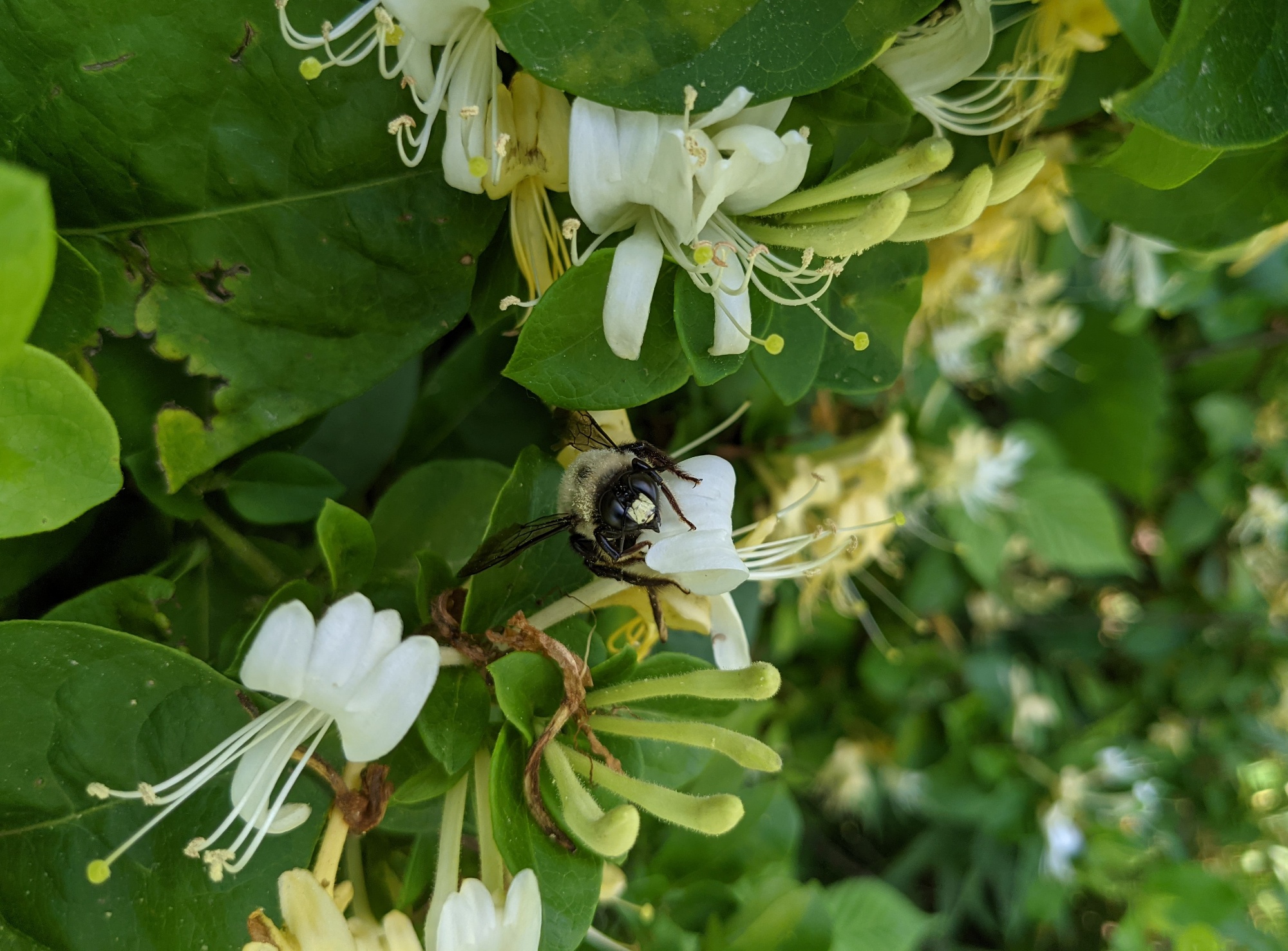
On hot summer days, the fragrance of honeysuckle fills the air, reminding me that it’s time to get out in the midday heat – when the blooms are at their peak – and harvest enough for wine. While I made wine, I also decided to try making a honeysuckle mead (metheglin). I’m pleased to say that it came out so good, I’m planning to make it every season!
Wondering what a metheglin is? It’s simply a mead made with spices and/or botanicals; ergo, honeysuckle mead is a metheglin.
The process of making mead is very similar to making wine (I loosely followed Jack Keller’s recipe – see page 196 – skipping the Campden): collect the fresh blooms, removal the green parts (including sepal), steep in hot water, strain the liquid into a fermentor, add the tannin, acid, and yeast – but there are a couple of notable differences.
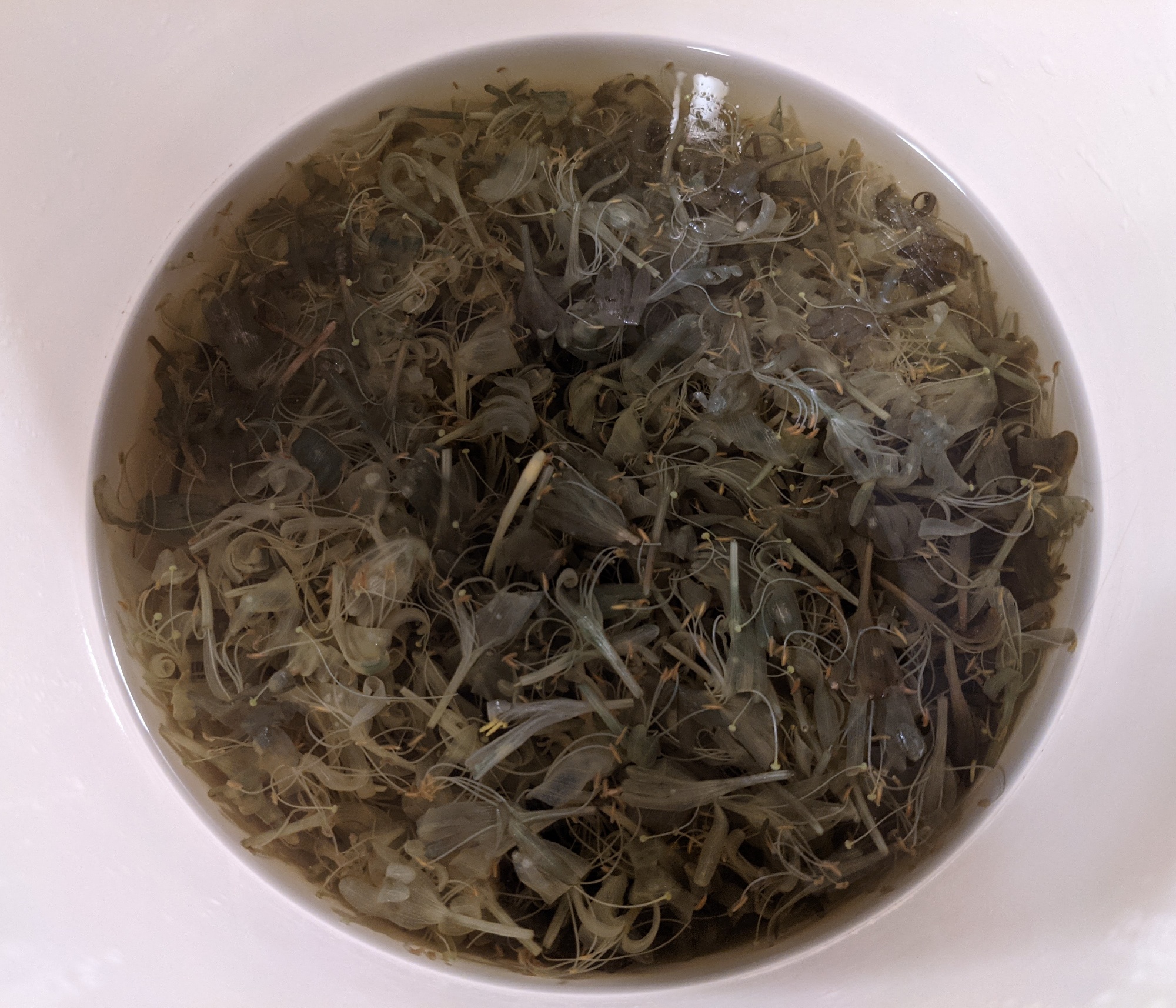
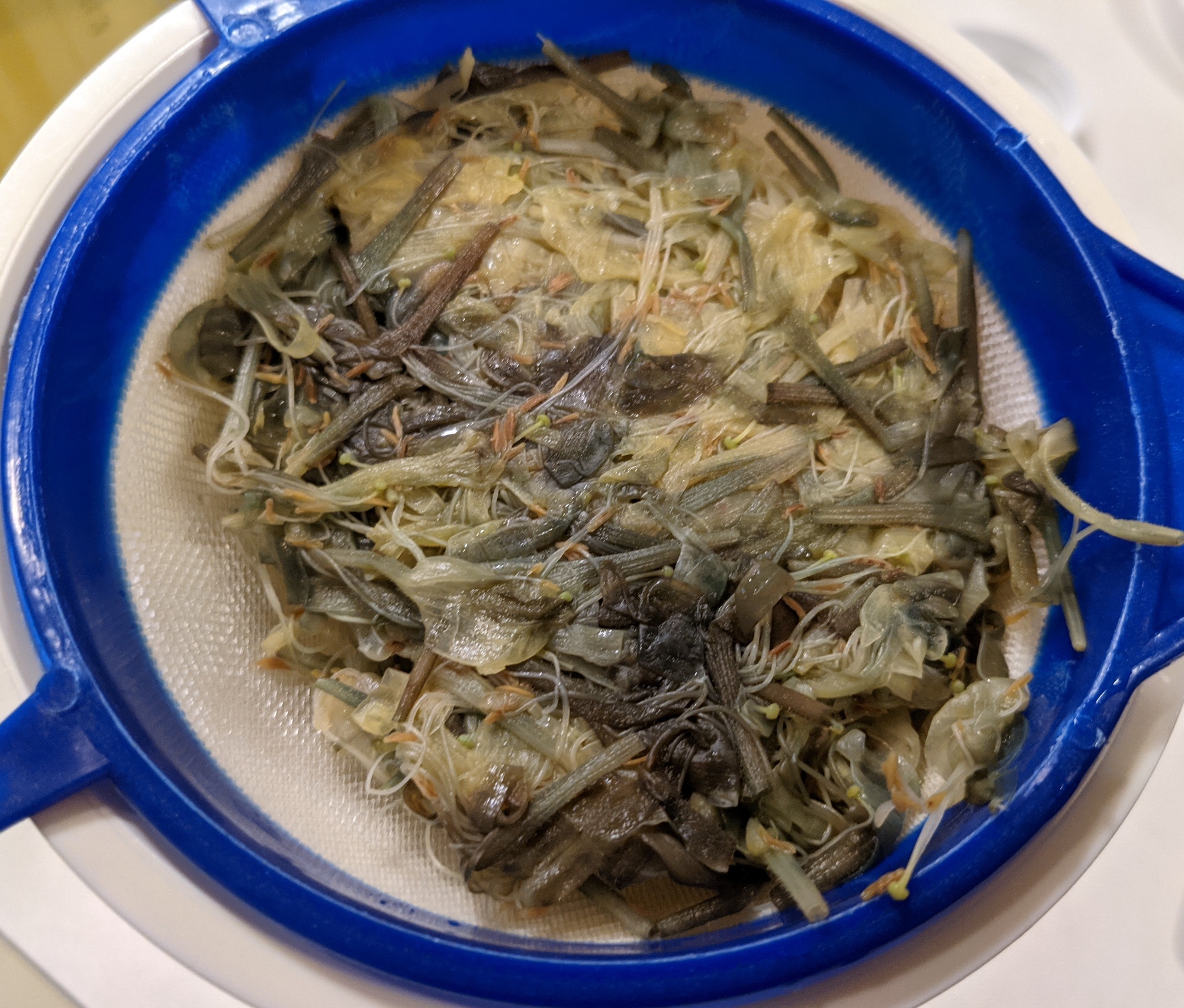

First, the fuel source for the fermentation is honey, not sugar. I used 2 pounds of honey to make about 4L of mead. Honey is, understandably, much more expensive than sugar (even cane sugar, which is the only kind of sugar I use for my ferments), but it imparts a uniquely complex flavor to the finished beverage. Honey must be used to make mead – or you’ll be making wine, instead.
Second, mead should go into a carboy with airlock immediately, or it can become an unpleasantly vinegar-forward affair. I know this because I had a small volume of “overflow” that I simply poured into a jar – when I went to sample it, it was heartburn-inducing. I feared for the gallon I had in the airlocked carboy, but when I sampled it, it was exactly as I’d hoped…and definitely mead.
If you’ve never tried mead, you may be wondering what it tastes like, and how it differs from wine. To me, a good semi-sweet mead (meaning there’s still some residual sweetness left in the finished product) is reminiscent of a slightly sweet white wine (perhaps a bit like a well-balanced Gewürztraminer, and definitely not sickly sweet), but the honey transforms that into something with a subtly fruity flavors…which is amazing because there’s no fruit used in the recipe.
A good mead is clean, not cloying, with what tastes to me like the the slightest hint of a fresh Concord grape, just picked from the vine. It’s not an overbearing fruit flavor, though; instead, it gently teases the palate in the most pleasant way – a whisper of bright fruit.
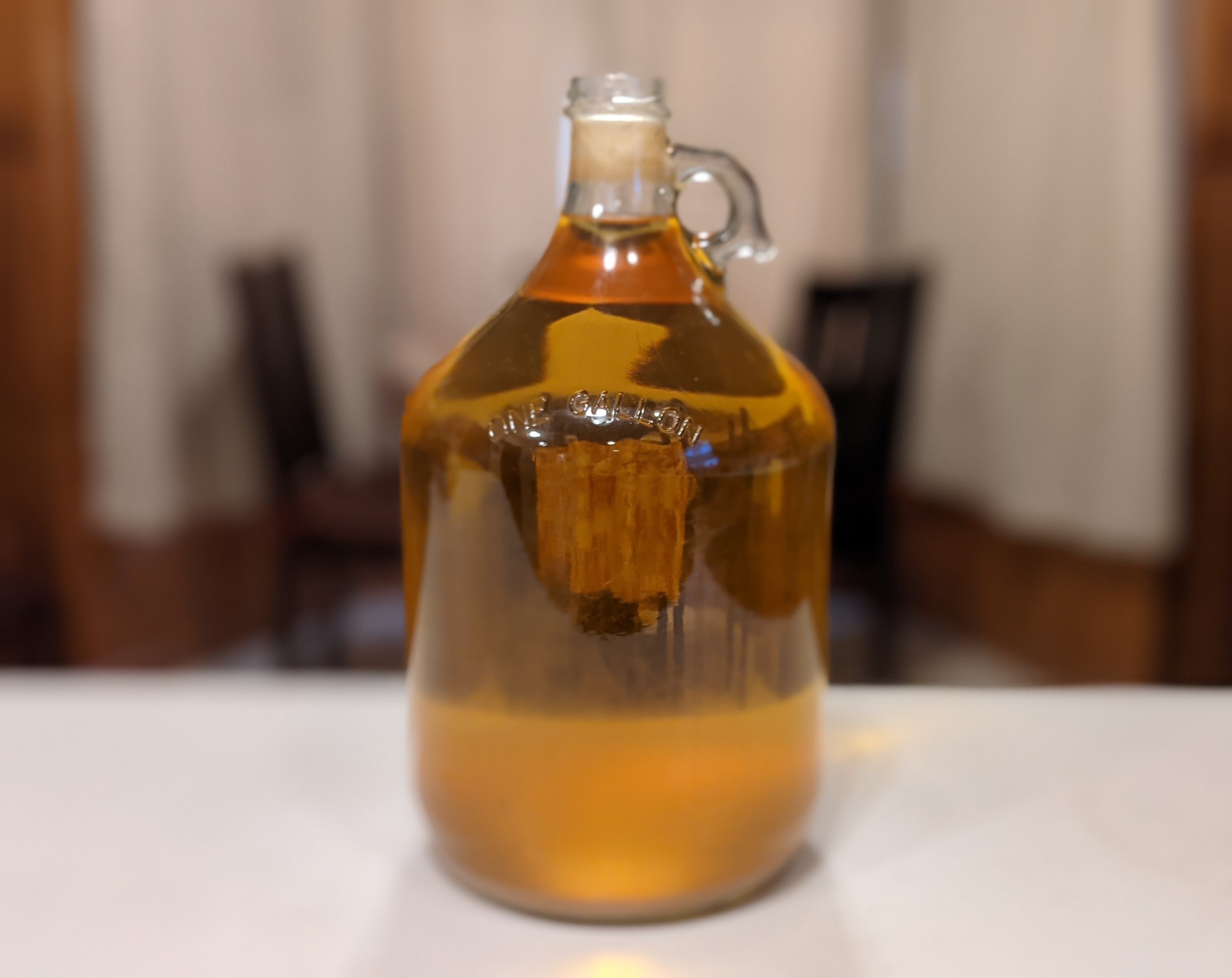
With the perfume of honeysuckle wafting from the glass, the mead artfully marries the subtle – but appreciable – floral notes with the soft fruit notes from the honey. This is a really special libation: a visual, olfactory, and gustatory experience that won’t soon be forgotten.
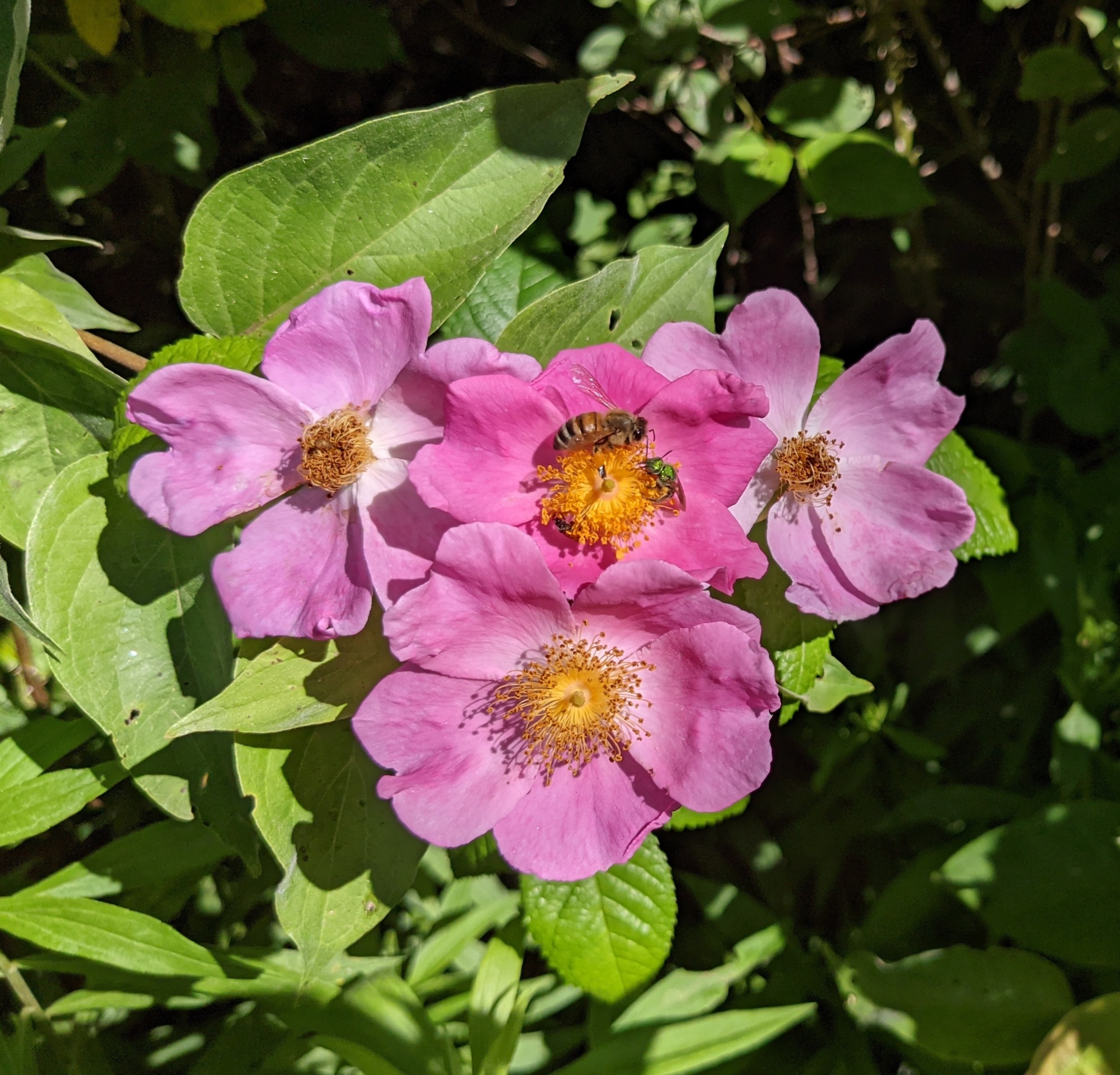
Bees are dying. Without bees, there would be no mead, and our ability to grow food would also be severely impacted. Bees (and other pollinators) perform critical functions for growing food: according to Planet Bee Foundation, “87 of the leading 115 food crops, or about 75%, depend on pollinators.” Learn more about how to help save bees here.🐝
